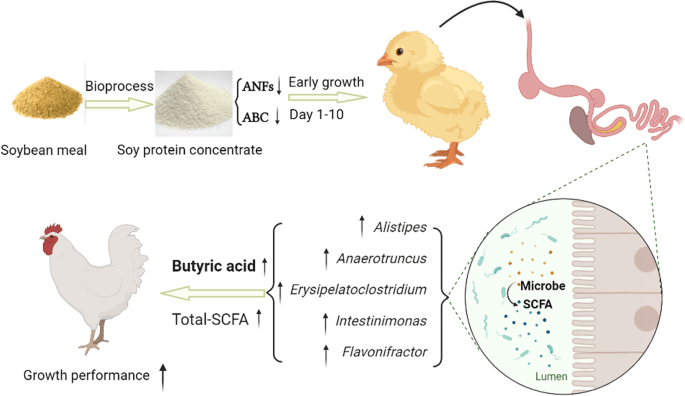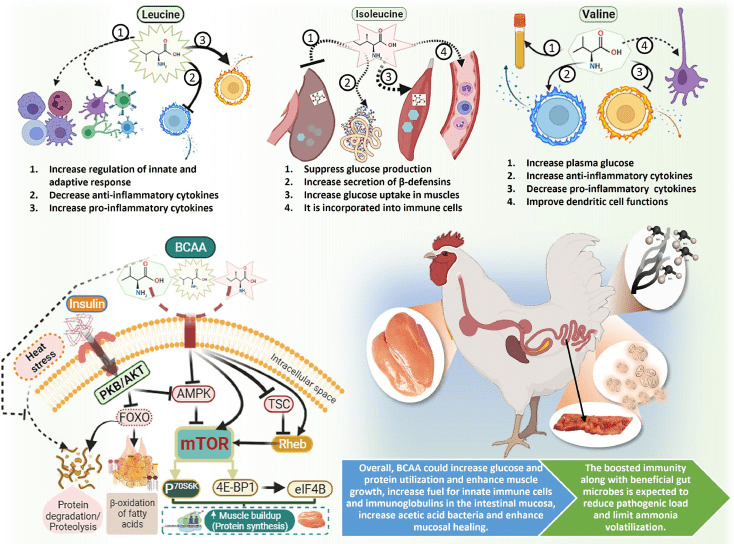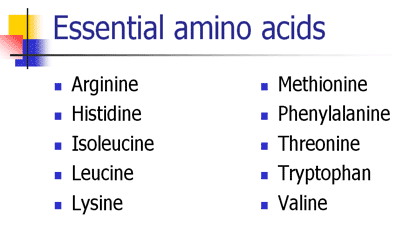What are Amino Acids? Amino acids are essential nutrients for both humans and animals. They are the basic blocks of protein, the major component of muscle, and therefore the meat that most animals are grown for.
Protein is the single most important nutrient in the body, making up to about 17% of the nutrients. Also, proteins are the second most costly component of the diet apart from energy.
Amino acids are needed by the chicken for optimal growth and performance. So, the quality of protein in a chicken diet will be determined by the total amino acid profile and not necessarily the total protein of the diet.
Types of Amino Acids
Basically, Amino acids are classified as essential (indispensable) or non-essential (dispensable). Essential amino acids are required to be supplied in the diets of poultry, swine and aqua.
These amino acids cannot be synthesized by the body, hence their need to be added to the animals diet in supplemental forms.
Non-essential amino acids however, can be synthesized by the body in adequate amounts, therefore, they are not required to be added to the animal’s diet.
The essential amino acids include: Methionine, Arginine, Threonine, Tryptophan, Histidine, Isoleucine, Leucine, Lysine, Valine and Phenylalanine.
The non-essiential amino acids include: Alanine, Tyrosine, Serine, Proline, Glutamine, Glutamic acid, Aspartic acid, Glycine, Asparagine and Cysteine.
It is however necessary to note that all these amino acids are important and therefore are very crucial for the animal to grow and perform satisfactorily.
Importance of Amino Acids in Poultry Nutrition

Amino acids play several important roles in the life of chicken. They are required by the body for a number of physiological functions essential for survival and production.
For example, hormones, enzymes, antibodies, muscle, skin, mucous, membranes and hemoglobin are all proteins and so rely completely on amino acid supply for their production.
Amino acids are essential for tissue development, immune chemical production, mucus secretions, feather development, skeletal development, egg formation and milk production. Enhancing all of these will result in enhanced reproduction, growth, meat, egg and milk production.
In the formation of protein, both essential and non-essential amino acids are needed in adequate amounts according to the genetic code needed to form peptides. These peptides, formed of several repeats of specific amino acids required, link together to form a particular protein.
For instance, in the process of egg formation, lysine and sulphur ammonia acids (Methionine, Cysteine) are the most important amino acids. Now if there is a short supply of any of the amino acids required for this process, there is a limitation, so the process stops.
This then introduce the principle of limiting amino acids and therefore the importance of supplemental amino acids.
Read Also: Importance of Multivitamins in Poultry Production
The Principle Limiting Amino Acids in Poultry Nutrition
The limiting amino acids are those essential amino acids which are deficient relative to the animal’s requirements. Therefore, the amino acid that is most deficient becomes the first limiting amino acid, whereas the second most deficient becomes the second limiting and in that other.
In poultry production, the limiting amino acids are in the order of Methionine, Lysine, Threonine, and Valine (Fig. 1) whereas Lysine, Threonine, Methionine and Tryptophan are the order of limiting amino acids for swine. Considering the Liebig barrel (Fig. 1), the full potential of the barrel could be achieved if the lengths of the shorter staves are increased.
Until that is done, the capacity of the barrel will only be limited to the height of Methionine. Therefore; the efficient utilization of other amino acids depends on sufficient amounts of the limiting amino acids. Any other amino acid in excess may not be utilized unless the limiting amino acids are supplied in adequate amounts.
Due to the insufficiency of amino acids in the raw materials, defining the animal’s requirement for specific amino acids becomes very important in maximizing their full potential. It is only then that adequate amounts of supplemental amino acids can be efficiently incorporated into the diet.
The Concept of Ideal Protein

Amino acids in poultry diets are required to be balanced to ensure optimum performance in performance of poultry. The concept of ideal protein therefore describes a protein that has a perfect amino acid balance.
It is further explained as one that supplies optimum balance of essential amino acids together with sufficient nitrogen for the synthesis of non-essential amino acids.
This optimum balance among amino acids in diets is called “Ideal Protein”. The concept assumes that through the requirements for essential amino acids may vary between conditions; the ratios among them remain fairly stable.
Usually, the lysine requirement for a particular condition is determined and used to calculate the requirement for other essential amino acids. The ideal protein concept eventually results in diets with no amino acid deficiencies and minimum excesses, thereby avoiding any potential amino acid imbalances in diets.
The benefits of the Ideal Protein include:
- Maximum lean meat production with minimum intake of amino acids and reduced feed intake.
- Improved feed efficiency (Digestion, absorption and reduced nitrogen excretion).
- Increased precision in diet formulation (reduced safety margins for critical ingredients).
- Reduced cost of feed.
Read Also: Importance of Poultry Management Practices
Meeting the Animal’s Amino Acid Requirement

The animal’s need for amino acids may be met in two ways. The first way to achieve this is the use of protein rich ingredients (fish meal, soya bean meal, sunflower meal). The other way involves the inclusion of supplemental synthetic amino acids.
Considering the classical situation, the addition of fishmeal and soya bean meal to the diet will automatically increase all other amino acids. This will only increase the imbalances among the amino acids rather than balancing the deficiency of Methionine and Lysine.
Apart from the imbalances, the increased crude protein will also result in Nitrogen excretion. For the animal, this means a lot more work to excrete this nitrogen and this work use up energy. This energy should be used for growth, so excess protein will actually reduce potential growth.
The most damaging effect is increased cost of feed and we all need cheaper feeding. Alternatively, the specific amino acids limited in the diet (Methionine and Lysine) could be balanced by the use of supplemental synthetic amino acids.
In this situation, the imbalance can be corrected by adding only synthetic Methionine and Lysine. This will reduce the crude protein of the diet, improve the utilization of Nitrogen and reduce the cost of feed.
In recent years, supplemental amino acids have become very important components of the chicken’s diet. This is a result of their critical role in ensuring high performance of poultry animals.
Additionally, supplemental amino acids have become important due to the role in ensuring reduction in environmental problems which are generated from poultry and livestock production. A properly formulated diet should meet animals’ nutrient requirements while minimizing nutrient deficiencies and overages.
One of the key features of modern diets is the emphasis on digestible amino acid levels are critical for lean meat production. Amino acid quality is determined by a diet’s ability to supply essential amino acids in the ratio profile.
In conclusion, when supplemental amino acids are used appropriately, they can reduce the amount of crude protein needed, thus lowering diet costs.
This allows nutritionists to use a wide range of alternative ingredients in the diet that otherwise may not be economically or nutritionally practical.
When protein and amino acids are overfed, the excess will be excreted as nitrogen compounds into manure, which can negatively affect your animals and their living conditions. It also has a negative impact on the environment.
Using supplemental amino acids is the most efficient way to a balanced nutrition program and the most practical way to developing environmental friendly poultry and livestock activities.
Read Also: 10 Health Benefits of Lemon Grass (Cymbopogon)





